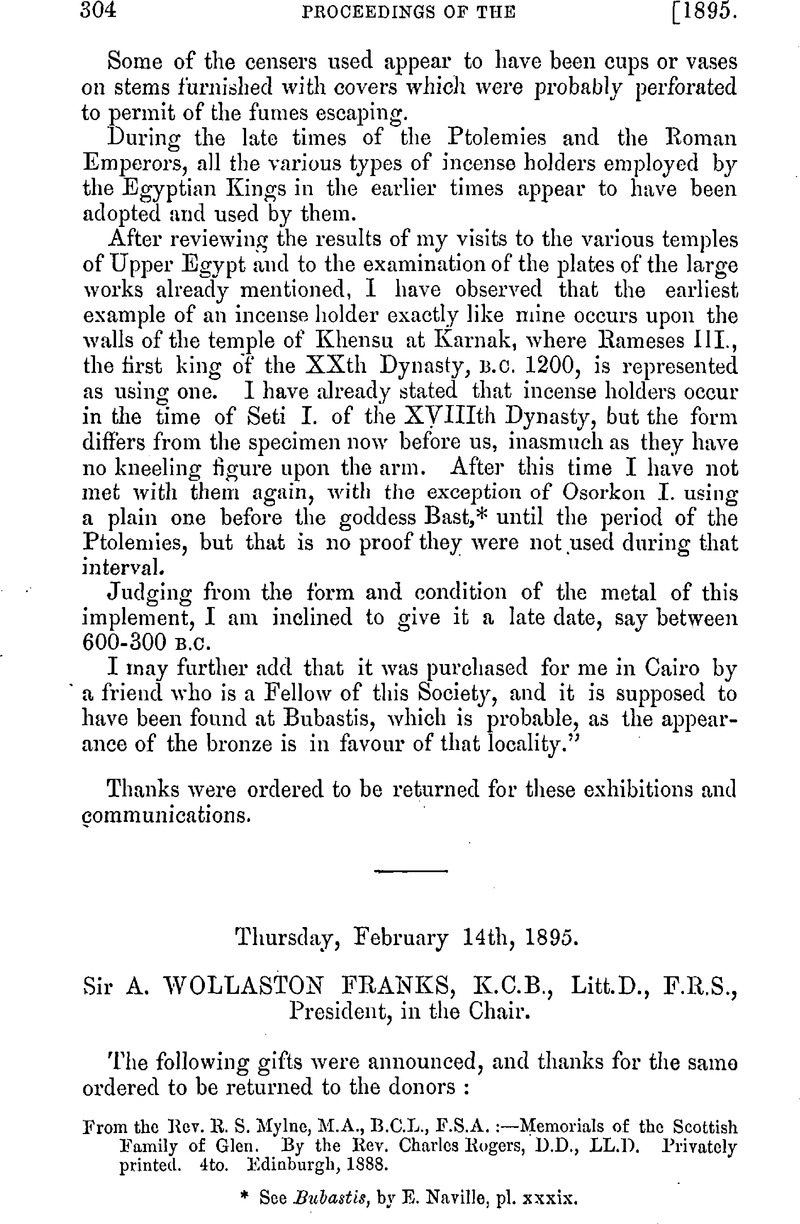No CrossRef data available.
Published online by Cambridge University Press: 10 May 2010

page 304 note * See Bubastis, by E. Naville, pi. xxxix.
page 306 note * Vol. 43, 1871, page 5.
page 306 note † See Athenaeus, , Deipnosphistae, Schweighäuser's edition, Strassburg, 1804. vol. iv. p. 280Google Scholar. Lib. xi. clxi.
page 306 note ‡ The peculiarities of Etruscan work in this plaque are only slightly marked, and this is usually so in Etruscan copies of Greek or Italo-Greek originals made at late periods when Greek art itself was declining.
page 311 note * Burton.
page 314 note * Sic. I cannot suggest the meaning.
page 314 note † A curious variation from the usual form.
page 315 note * This would be the wooden frame-work only.
page 315 note † Of course this does not mean the hide of a white horse, but a horse-hide tanned, or made into white leather.
page 315 note ‡ For cribris, sieves.
page 315 note § Plastering or daubing.
page 316 note * A hole in the MS.; perhaps spike-nails.
page 316 note † Hinge-hooks, the part driven into the side-post.
page 316 note ‡ Gudgeons, the ring part of the hinge, fastened to the door.
page 317 note * Gloves.
page 318 note * This seems to mean by scraped measure.
page 318 note † I cannot explain this; the expression occurs several times.
page 319 note * Parchment torn
page 320 note * A porcellus was a sucking pig. Apparently it was called porculus when one year old, and when two years old aper, sus, or porcus, according to circumstances.